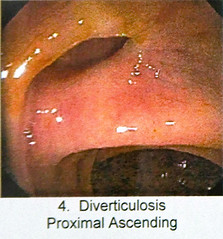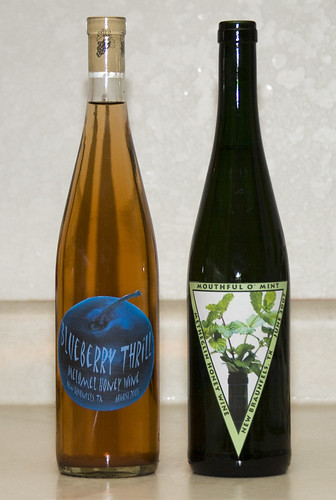Today I started my second week of school. Second? Yeah. I was busy last week with all sorts of schoolish and workish things. My blogging wasn't very substantial (like it ever is, you cleverly snigger).
But yeah, this thing I've been threatening to do--take some college-level photography courses--I've actually for-true pulled the proverbial trigger on. Last Wednesday was my first day, with my weekly schedule boasting nine hours Monday-Thursday. My first class is 2D Design, which has nothing directly to do with photography, but is one of two prerequisite classes I've got to take to get to the good stuff. Technically, I'm supposed to take them before I can enroll in any other Fine Art courses, but because I asked so nicely, I got a waiver to take the in separate semesters concurrently with the upper level photography stuff. Nice. And 2D Design is interesting in its own right. The instructor is one I've encountered on occasion in the past, and she seems like a good deal of fun. She refers to me as my boss' "Sidekick," so we're not too hidebound by formalities. Then again, in a fine arts class would you expect anything less? There are 18 students in the class, 16 of them young women. Every single one of them is 18-20 years my junior. In fact, I realized with a start that first day that 20 years prior, I was a callow freshman sitting in a similar class for the first time. How's that for bringing on instant feelings of decrepitude? There are few things more disheartening than realizing that creepy old guy in the third row is you.
My next class is Intro to Traditional Photography. There are 18 students here as well, split 50/50 male/female. The original course description I saw last year made it out to be 75 percent film and 25 percent digital, give or take. The reality of it is that it's 100 percent film, or, many ways to deplete a bank account in no time flat. We'll be shooting B&W film in honest-to-gosh film cameras and developing them in a darkroom with honest-to-gosh chemicals and negatives. The whole nine yards. I'm lucky in that I have the Wife's old 35mm Canon to use, and don't have to spend a couple hundred on a film body that's guaranteed to be obsolete by, oh, sometime three years ago. Don't get me wrong--there's a lot of value in learning the basics of film photography which is directly applicable to digital. Knowledge is good. But I really wonder how long classes like this will remain viable. That point was driven home the first day when the instructor waxed poetic on certain types of film, certain types of photo paper, and punctuated almost every nostalgic reminisce with, "But they don't make that anymore." Digital has reached the point where full-frame sensors have surpassed the photographic quality of the finest 35mm film and cameras, and they're fast approaching the quality of the previously-untouchable medium format cameras. I will wager that within 10 years they'll have far outstripped the grandeur of the gold standard large format photography. It just strikes me that focusing exclusively on film in this entry-level course is setting students up for instant obsolescence.
I, myself, have hedged my bets sufficiently. My third class is Photojournalism 101, and as I expected, the first two classes have consisted of a crash course in photography basics with "Get out there and shoot something" being the modus operandi from here on out. Photojournalism more than any other branch is being radically redefined by digital, and those photojournalists stubbornly sticking to film only are unemployed relics. A sea change is happening, with the photojournalist suddenly becoming a combination of that, a print journalist and a broadcast journalist. Photography purists scoff at Nikon's new D90 and its HD video capability, but with newspapers struggling to reinvent themselves online to survive, multimedia content is one way to stay relevant in the 21st century. Even now news organizations are sending their reporters out armed with flash memory digital recorders to document the story, so I predict that not only will HD video become a common feature in high end dSLRs, it'll become a
required app for all working photojournalists. I blame it on Steve Jobs and the iPod--all tech will eventually merge into one device, the iOmnipotent, perhaps.
The class itself looks to benefit me greatly. The instructor is a retired San Antonio Express-News photog, and we've gotten to talk shop a little. Unlike the Fine Arts department--which has no loaner cameras to check out--the School of Journalism has half a dozen Canon Digital Rebels available for student use. There are 18 students here as well, again split evenly between male and female. That means 12 students have to come up with their own cameras. I'm all set in that department, obviously. But don't cry too much for them, at least they're in better shape than the Trad Photo students who have to buy film cameras, paper, film, chemicals... For roughly $400 in class-related expenditures (assuming they started from scratch) the digital students are coming away with far more value in hardware. These first couple of days have been spent going over basics, such as shutter speed, aperture and such, things I have a decent grasp of. But its exercises like dissecting a photo from a newspaper that I've been able to exercise the rusty old editor muscles, pointing out how one simple, yet visually arresting image is better for the front page whereas a technically more interesting, complex photo would work much better as jump art. I may not know how to take a great photo, but I damn well know how to use 'em in a proper newspaper layout. After class today, one student came up to me and asked my opinion of a Nikon D40 she'd just bought. Naturally, being a Canon man, I told her she'd just doomed herself to failure. Well, I thought it. Actually, I told her Canon and Nikon were in a horserace and each produced cameras and lenses that compared very favorably to the other, and that she'd do fine with that particular camera. Looking at it now online, it does look a little long in tooth with just 6.1 megapixels and the D90 just announced. For the price she could've gotten a Canon XTi like mine which is two generations newer, or at least a Nikon D50 if she'd known where to shop around. But for classroom purposes she's got a good camera body. As long as she doesn't plan on blowing all her shots up to 8x10s or larger, she'll never run up against the 6.1 MP limitations.
Looking over what I've just written, it occurs to me that I know a heck of a lot of technical stuff about cameras and photography in general, yet I still have little in the way of practical knowledge or instincts when it comes to actually taking the shot. Ask me again at the end of the semester--I hope I'll have a different story then.
Now Playing: The Kinks Schoolboys in Disgrace




